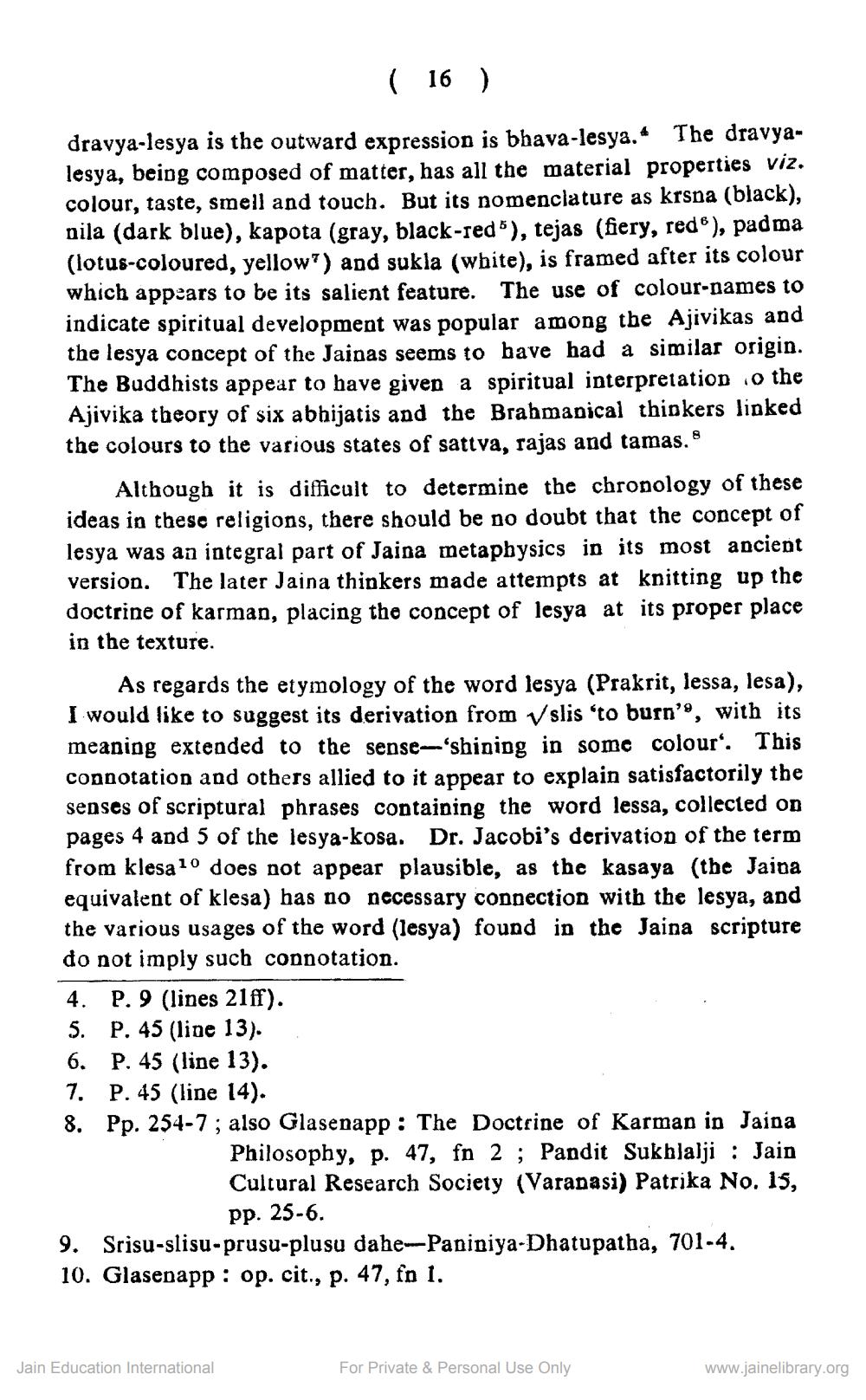________________
( 16 )
dravya-lesya is the outward expression is bhava-lesya. The dravyalesya, being composed of matter, has all the material properties viz. colour, taste, smell and touch. But its nomenclature as krsna (black), nila (dark blue), kapota (gray, black-red"), tejas (fiery, red), padma (lotus-coloured, yellow") and sukla (white), is framed after its colour which appears to be its salient feature. The use of colour-names to indicate spiritual development was popular among the Ajivikas and the lesya concept of the Jainas seems to have had a similar origin. The Buddhists appear to have given a spiritual interpretation to the Ajivika theory of six abhijatis and the Brahmanical thinkers linked the colours to the various states of sattva, rajas and tamas.R
Although it is difficult to determine the chronology of these ideas in these religions, there should be no doubt that the concept of lesya was an integral part of Jaina metaphysics in its most ancient version. The later Jaina thinkers made attempts at knitting up the doctrine of karman, placing the concept of lesya at its proper place in the texture.
As regards the etymology of the word lesya (Prakrit, lessa, lesa), I would like to suggest its derivation from slis 'to burn'", with its meaning extended to the sense-'shining in some colour'. This connotation and others allied to it appear to explain satisfactorily the senses of scriptural phrases containing the word lessa, collected on pages 4 and 5 of the lesya-kosa. Dr. Jacobi's derivation of the term from klesa1o does not appear plausible, as the kasaya (the Jaina equivalent of klesa) has no necessary connection with the lesya, and the various usages of the word (lesya) found in the Jaina scripture do not imply such connotation.
4. P. 9 (lines 21ff).
5.
P. 45 (line 13).
6. P. 45 (line 13).
7. P. 45 (line 14).
8. Pp. 254-7; also Glasenapp: The Doctrine of Karman in Jaina Philosophy, p. 47, fn 2; Pandit Sukhlalji: Jain Cultural Research Society (Varanasi) Patrika No. 15, pp. 25-6.
9. Srisu-slisu-prusu-plusu dahe-Paniniya-Dhatupatha, 701-4. 10. Glasenapp: op. cit., p. 47, fn 1.
Jain Education International
For Private & Personal Use Only
www.jainelibrary.org




